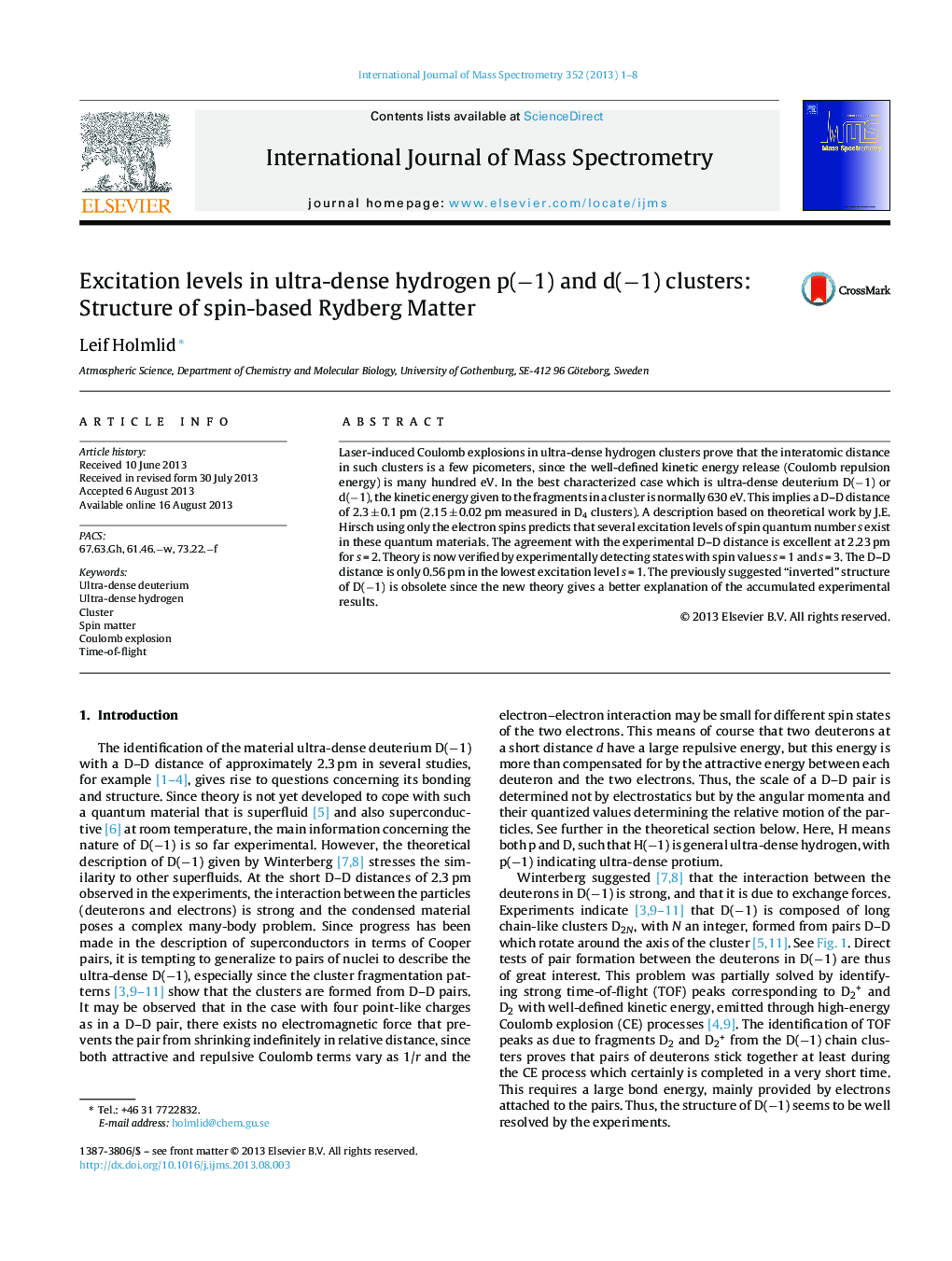| Article ID | Journal | Published Year | Pages | File Type |
|---|---|---|---|---|
| 1192520 | International Journal of Mass Spectrometry | 2013 | 8 Pages |
•The novel theory for ultra-dense materials predicts that several excitation levels of spin quantum number s exist.•A theoretical description of superconductors by J.E. Hirsch is the starting point.•The agreement with the normal experimental D–D distance is excellent at 2.23 pm for s = 2.•The predicted inter-atomic distance is only 0.56 pm in the lowest excitation level s = 1.•Theory is verified by experimentally detecting states with spin values s = 1 and s = 3.
Laser-induced Coulomb explosions in ultra-dense hydrogen clusters prove that the interatomic distance in such clusters is a few picometers, since the well-defined kinetic energy release (Coulomb repulsion energy) is many hundred eV. In the best characterized case which is ultra-dense deuterium D(−1) or d(−1), the kinetic energy given to the fragments in a cluster is normally 630 eV. This implies a D–D distance of 2.3 ± 0.1 pm (2.15 ± 0.02 pm measured in D4 clusters). A description based on theoretical work by J.E. Hirsch using only the electron spins predicts that several excitation levels of spin quantum number s exist in these quantum materials. The agreement with the experimental D–D distance is excellent at 2.23 pm for s = 2. Theory is now verified by experimentally detecting states with spin values s = 1 and s = 3. The D–D distance is only 0.56 pm in the lowest excitation level s = 1. The previously suggested “inverted” structure of D(−1) is obsolete since the new theory gives a better explanation of the accumulated experimental results.
Graphical abstractFigure optionsDownload full-size imageDownload high-quality image (109 K)Download as PowerPoint slide
